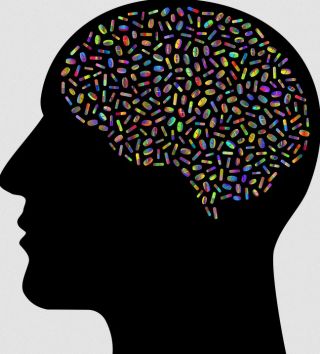Artificial Intelligence
AI Predicts Drugs That Are Not Safe to Take Together
AI machine learning identifies drugs that interfere with one another.
Posted March 4, 2024 Reviewed by Jessica Schrader
Key points
- A new study showed how AI can predict which drugs could interfere with another drug’s efficacy.
- The AI model predicted potential interactions from a dataset of existing medications and experimental drugs.
- The application of AI machine learning to drug discovery gives hope of better patient outcomes in the future.

An exciting development in digital health care is the use of artificial intelligence (AI) machine learning as a predictive tool for better patient outcomes. A new study published in Nature Biomedical Engineering by Massachusetts Institute of Technology (MIT), Brigham and Women’s Hospital at Harvard Medical School, Duke University, and their research collaborators demonstrates how AI can predict which drugs could interfere with another drug’s efficacy.
Prescription drugs to treat mental health are among the leading drug classes in the U.S., along with pain relievers and antihypertensives, according to 2021 data from Statista. Total drug prescriptions in the U.S. increased significantly from roughly 3.95 billion in 2009 to 6.7 billion in 2022, and by 2025, an estimated 4.38 billion retail prescriptions will be filled, according to Statista.
To understand the potential of AI in predicting which drugs should not be prescribed concurrently, the team had to first identify the drug transporters. In pharmacokinetics, the study of the absorption, distribution, metabolism, excretion, and toxicity of medication, drug transporters are membrane proteins that enable drugs to penetrate barriers.
If a person is taking two or more medications, and one of the drugs uses the same drug transporter, this could negatively impact patient outcomes. Many people in North America are on one or more prescription medications, so knowing what drugs reduce or block others is important information for patients and health care providers. In 2021, an estimated 60% of adult Americans took at least one prescription drug, and 36% took three or more, according to the U.S. Centers for Disease Control and Prevention (CDC). The CDC reports that 65% of Canadians between the ages of 40-79 years old took one or more prescription drugs in 2019.
In this new study, the researchers selected three common drug transporters for guiding medication through the intestinal lining of the digestive tract, a must-have ability for medication that is administered orally. These transporters are the breast cancer resistance protein (BCRP), multidrug resistance-associated protein 2 (MRP2), and P-glycoprotein (Pgp).
The most common method of drug delivery is orally, through the mouth, and the primary target is typically the small intestine. To measure how well a drug is absorbed, the researchers adapted a whole-tissue culture system—developed from tissue from the small intestines of laboratory pigs—that was created in a prior study. Small interfering ribonucleic acid (siRNA) are noncoding RNAs that can interfere with gene expression. The researchers utilized siRNA to modulate the expression of the drug transporter in the tissue model in order to figure out how the interaction between various drug transporters.
The team found drug transporters for over 20 medications and used this data along with data from external medication databases to train an AI machine-learning model that could predict drugs that interfere with certain drug transporters. The AI model predicted potential drug interactions from a new dataset of both existing medications and experimental drugs.
“For 28 clinical drugs and 22 investigational drugs, the model identified 58 unknown drug–transporter interactions, 7 of which (out of 8 tested) corresponded to drug-pharmacokinetic measurements in mice,” reported the researchers.
The researchers validated the AI’s predictions for a cardiac medication used to treat irregular heartbeat and heart failure called digoxin, an immunosuppressive drug called tacrolimus, a blood-thinner called warfarin, and an anti-epileptic drug called levetiracetam against a broad-spectrum tetracycline antibiotic used to treat or prevent infections called doxycycline. Pharmacologic data from hospital patients at Massachusetts General Hospital and Brigham and Women’s Hospital confirmed the AI model’s predictions, according to the researchers.
The researchers say that the AI model may shorten the drug development cycle by providing key safety information about potential harmful drug interactions. The application of AI machine learning to drug discovery gives hope for better patient outcomes in the future.
Copyright © 2024 Cami Rosso. All rights reserved.


